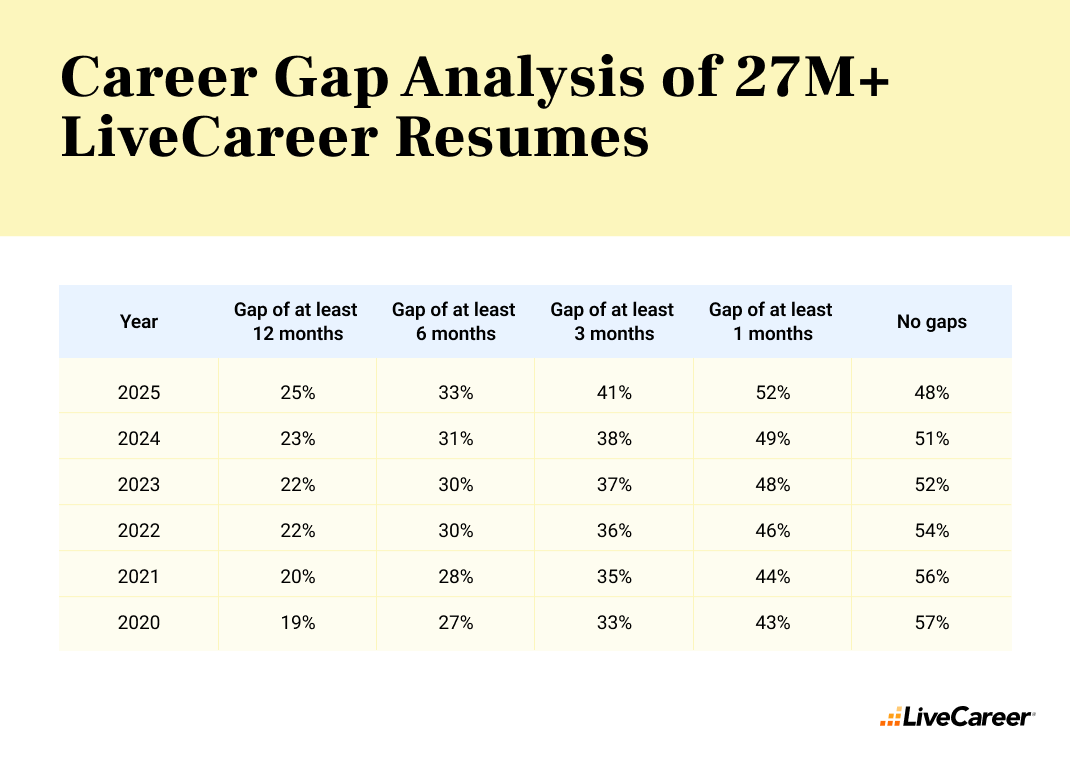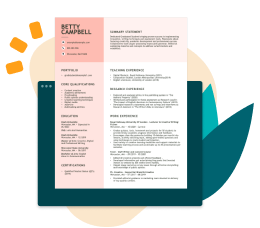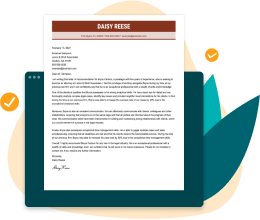LiveCareer Data From Over 27M Resumes Reveals Growing Trend in Employment Gaps
New research based on an analysis of more than 27 million U.S. resumes created between 2020 and 2025 from LiveCareer reveals a significant increase in career gaps, with long-term unemployment persisting long after the pandemic. The report assessed resumes for employment gaps of one month, three months, six months, and more than 12 months. All categories of career gaps experienced a steady increase from 2020 to 2025.
Key Findings:
- Long-term career gaps are rising: Nearly 1 in 4 job seekers (25%) had a gap of at least 12 months in 2025, up from 19% in 2020.
- Short-term gaps are more common: Over 50% of workers reported at least a one-month gap in 2025.
- Continuous employment is declining: The percentage of job seekers with no career gaps dropped from 57% in 2020 to 48% in 2025.
- Pandemic influence persists: Career gaps of all lengths have steadily increased since 2020, underscoring lasting economic shifts.
Why Are Gaps in Employment Increasing?
The data indicates that the labor market has not stabilized from the start of the pandemic and has become an increasingly tough landscape for the workforce. Even when factoring in periods of labor shortages experienced in recent years, a significant portion of workers have battled with employment gaps in a resume. The steady increase in layoffs and what many are calling a white collar recession, have left professionals struggling with how to address these gaps with prospective employers.
Implications for Employers and Job Seekers
For job seekers, learning how to explain gaps in employment strategically on resumes is essential. Job seekers should frame employment gaps as opportunities for growth, resilience, and skill-building, rather than as setbacks.
For employers, it may be time to reconsider outdated hiring biases. Given that more than half of workers now have employment gaps in their resumes, recruiters should focus on skills, experience, and potential rather than continuous employment history.
What this means: The labor market is in the midst of a culture shift where job seekers are becoming more transparent about their career gaps and employers are beginning to have a more accepting outlook about these breaks in employment. This transition was born out of necessity — less than half of the workforce has a resume without a career gap — but the change is a welcome one. There are many legitimate reasons to have an employment gap and layoffs are an unavoidable hallmark of today’s labor market.
For press inquiries, contact Elizabeth Buccianti, senior manager public relations, at elizabeth.buccianti@bold.com.
Methodology
The findings are based on an analysis of more than 27 million U.S. resumes created using LiveCareer’s online resume builder between January 1, 2020, and February 28, 2025.
About LiveCareer
LiveCareer’s online Resume Builder is designed to empower its users to get better jobs and improve their job search. A one-stop shop among AI resume builder tools, LiveCareer features cutting-edge resume templates, a powerful cover letter builder, and extensive free career resources to support job candidates in reaching their professional goals. Trusted by over 10 million users around the world, LiveCareer has been publishing expert advice from Certified Professional Resume Writers since 2005. LiveCareer’s career tips have been featured in renowned media outlets, including Bloomberg, Forbes, and Newsweek. Stay connected with LiveCareer’s latest updates to improve your job search on Facebook, Instagram, LinkedIn, and X.







